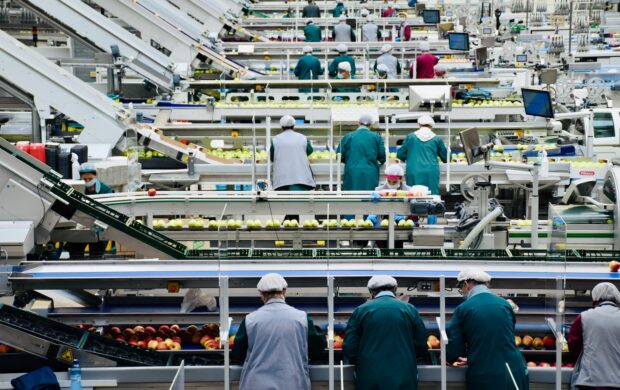There are three practical ways Forum uses futures to build collective capacity to respond to uncertainty and deliver on impact. Ariel Muller, Forum’s Director of Futures and Strategic Initiatives, explores the practices in this blog, the final part of a three-part series sharing lessons we have learned in using futures and foresight with civil society organisations and philanthropy over the years. You can read the first blog here, and second here.
“The concept of futures almost seems outdated – disruption is so constant now.” I heard this recently in a conversation with one of Forum’s partners. It was a funny thing to hear, given my role as Director of Futures, but I get it. Disruption has become the norm.
That said, I would say that even though it’s nearly impossible to predict what the world will look like in twenty years, ‘futures thinking’ is not outdated. It’s core purpose—building our collective agency to respond to uncertainty — is all the more important, especially for those who want to create positive impact through impact investing and philanthropic funding.
Disruptive events such as the pandemic, cyclones, major flooding, heat waves, and multiple geo-political conflicts have heightened the understanding of the risk posed by impact investors of the risks posed by unforeseen shifts. Natural disasters and public health crises may require immediate attention and resources, and while essential, they may divert funds from long-term projects addressing the root cause. Rapid technological advancements and societal changes may render existing strategies obsolete, requiring constant adaptation. We’re witnessing leading philanthropic networks begin to adopt futures approaches to build their capacity to respond to disruption and anticipate future needs. It makes sense. If philanthropy is about creating a positive impact in the future, understanding how that future might unfold will only enhance the ability to deliver on this aim.
Futures thinking is a strategic and forward-looking approach to learning how to anticipate future challenges and opportunities. It involves the exploration of a range of potential pathways and, when combined with systems thinking, it also serves to better understand how to not replicate some of the mistakes of the past. This process can inform better decision-making as well as greater imagination and equip philanthropists to think more systemically about how to allocate funds.
Philanthropic organisations that are using futures
In Singapore, the Asia Philanthropy Circle develop scenarios created the Future of Asian Philanthropy in 2050 which examines key driving forces in society and lays out a set of four imagined scenarios that illustrate different outcomes from these forces. The report acknowledges ‘that the future holds great unknowns’ – but this does not mean that it is entirely up to chance. This research aims to navigate the uncertainties of the future, ensuring that philanthropy remains flexible and responsive to society’s urgent demands.
In Europe, Philiea has launched a Futures Philanthropy initiative, a collaborative effort that aims to unite foundations and philanthropic organizations in a community dedicated to enhancing future-thinking capabilities within the sector. The primary focus is on fostering futures literacy – the ability to employ anticipation and imagination for improved strategic decision-making, understanding key drivers of change, and exploring emerging opportunities.
Individual philanthropies are also at work. For instance, Forum has been partnering with ClimateWorks Foundation who have been using horizon scanning to explore how volatility around critical minerals and food prices may impact climate funders in the future. Together, we developed the ‘Shocks to the System’ a game that helps build networks members’ futures literacy and equip them with ways to think systemically in response to futures shocks.
There are three practical ways Forum uses futures to build collective capacity to respond to uncertainty and deliver on impact:
- To name the ‘Black Elephants’: Black elephants are high-impact, highly probable events that are widely anticipated but not talked about, e.g. the ‘elephant in the room’. These are events that organizations and networks know about but don’t feel equipped to discuss due to their complexity, and thus may not be prepared for. We tend to opt for the status-quo rather than name the elephants. For example, in a recent Forum workshop in response to the question: “What do you think are our ‘black elephants’?” — a person answered that the transition “will not be orderly” – meaning that the transition to decarbonise our economy will not be collaborative, nor restore a sense of continuity to our society. In this instance, we used futures to create a space to face into the unsaid, talk the topic through and began to build the imagination and agency to chart a way forward. By openly discussing and addressing black elephants, investors and philanthropist can develop impact strategies that are more resilient, sustainable, and conducive to greater systemic impact.
- To create shared futures through ‘participatory futures’: Participatory futures is a way to disrupt power dynamics by embracing inclusivity, empowering marginalized voices, and fostering collective decision-making. It involves actively engaging a diverse range of stakeholders, including individuals, communities, and experts, in the process of envisioning and shaping preferred futures. Instead of relying solely on traditional top-down forecasting methods, participatory futures emphasizes inclusivity, collaboration, and the collective wisdom of a broad spectrum of people. Through co-creating narratives and decentralizing power, this approach ensures a diverse range of perspectives shapes the future. As an example, the Joseph Rowntree Foundation’s Emerging Futures programme is a vital part of how the foundation delivers on its mission to speed up the transition to a more equitable future for people and the planet by using placed-based imagination and supporting local communities to future-build together.
- To shift mindsets for better decision making today: At Forum, we combine scenario building with knowledge of how systems change. One of the deepest levers for systemic change is a shift in mindsets: how we see and understand the challenges we face. Part of our Future of Sustainabily 2023 report, our ‘Courage to Transform’ trajectories explored the mindsets that are shaping businesses’ response to our multiple crises and posed the challenge that any mindset that maintains a status quo response would lead to devastating trajectories for humanity, and yet this is the dominant one.
The scenarios were used to help those within businesses to have deeper conversations about the responsibility of leading change in this decade. Early forms of philanthropy were often driven by religious or moral imperatives, with individuals or institutions providing charitable assistance to alleviate immediate needs or address social problems. In the future philanthropy may increasingly prioritize interventions that address systemic issues and root causes of social problems, rather than focusing solely on symptomatic relief. This could involve supporting cross-sector collaborations, advocacy efforts, and policy initiatives aimed at driving structural change.
Catch up on the series
- Long term imagination for impact: Creative futuring for civil society and philanthropy by Alisha Bhagat
- Love, futures and philanthropy: Why giving in a polycrisis needs to start from the heart by Hannah Pathak
This blog is the final part of a blog series on the lessons we have learned in using futures and foresight with civil society organisations and philanthropy over the past couple of years, as well as case studies, process, and impact.
This blog was originally published on Forum for the Future on 18th June 2024.




Join discussion